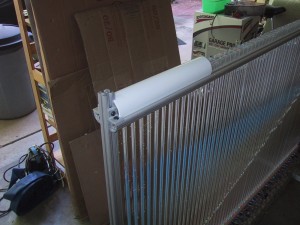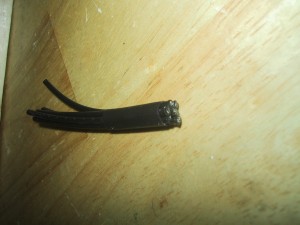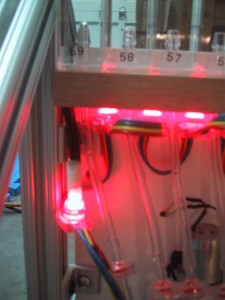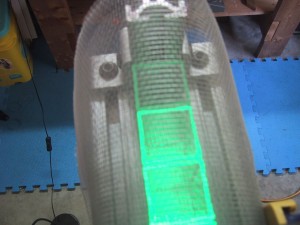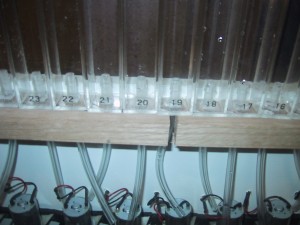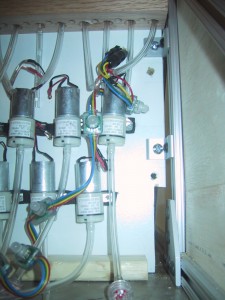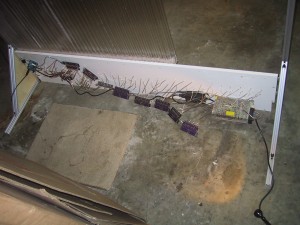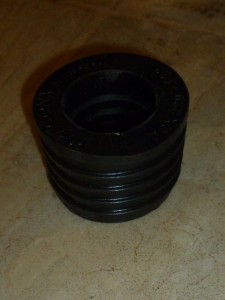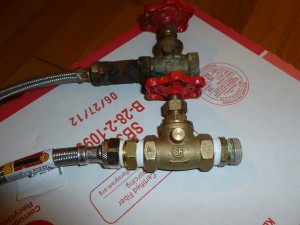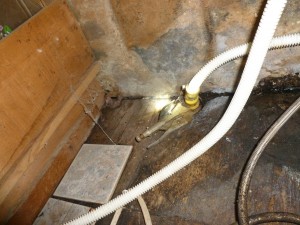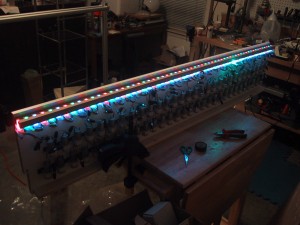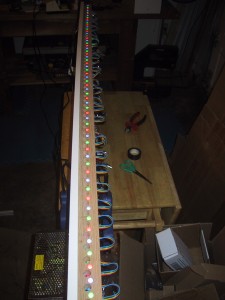Now that I have the electro-mechanical systems working, I am focusing on finishing the trim pieces for the frame that will hide the electronics and top of the tubes.
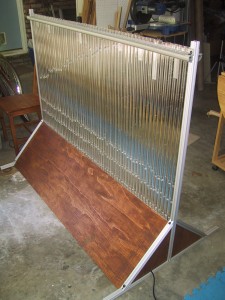
This mostly consisted of notching a few slots in the pieces of plywood for the aluminum bottom pieces and cables to go through, and a day’s worth of work with a spray gun.
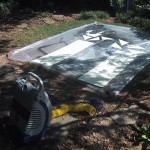
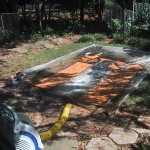
I had initially planned on using bright aluminum window screen mesh in a half tube shape over the top of the upright acrylic tubes, both to keep bugs out, as well as to give a nice visual appearance. But once I tried it out, I didn’t like the appearance, and couldn’t think of a good way to mount the ends of the screen cleanly. I am now considering using the old standby PVC pipe (probably painted some solid color with plastic spray paint). The other option is to buy a large clear acrylic tube (square or round) and use that in the same place. This would allow people to see the tops of the tubes (perhaps too well…it’s too bad McMaster doesn’t sell frosted acrylic tubes…) This is my current prototype:
